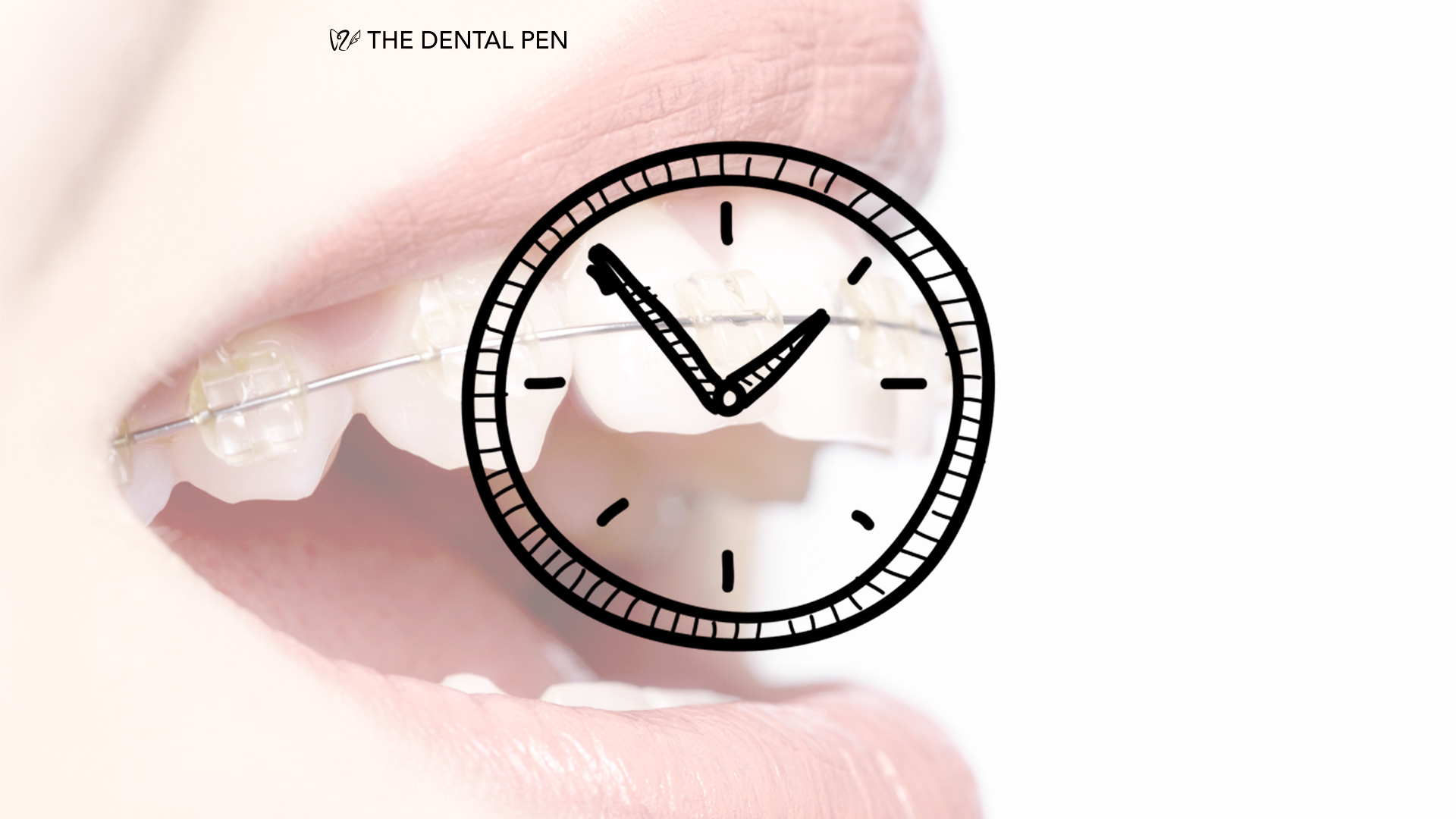Why Do Braces Take So Long?

Why are some in braces for 3-4 years while others are in them for 1-2 years or less? Is there a way to speed it up and make it go faster? What is involved at determining how long braces should be worn? Let's discuss what contributes to total time in braces and what you can do as a patient to ensure you don't have to be in them longer than you need to be.
My teeth look straight but my braces are still on?
There are two general stages of treatment when it comes to wearing braces. The first stage is when the teeth become aligned or straightened. This stage often occurs rather quickly and often in just a few months. This is when one notices that their teeth look "straight." So why don't the braces come off when the teeth "look" straight. This is when the second stage of treatment happens where the bite gets aligned-almost like fitting pieces of a puzzle together if you think of each jaw as a piece of that puzzle. The benefits of having the bite aligned so that the teeth fit together include improved chewing efficiency, speaking, lip posture, decreasing risk of trauma to the front teeth and encouraging natural wear so the teeth don't wear out faster than they should.
How fast can braces work?

The average time for braces for you may vary between 18 months to 30 months and sometimes longer. After all, no two sets of teeth are the same; even in siblings or twins (a.k.a me) for that matter!
The alignment of your teeth and jaws can play a significant role in treatment time. Generally, the more crooked the teeth are and the more complicated the bite is, the longer the treatment. Age plays a significant role as children and teenagers are in the phase of life where their bodies are growing and changing rapidly which helps to move teeth faster. Adults who are past their growth spurts have teeth that move at a much slower pace in comparison to teenagers. On top of that, adults are at a greater risk of gum disease and if gums aren't in pristine condition, the bone can deteriorate which dramatically slows teeth movement.
Due to limitations of our natural anatomy, there is a maximum limit to how fast teeth can move safely. Teeth move within the bone and the ligament (known as periodontal ligament) that holds them in bone. If teeth are moved too fast, the bone and ligament are damaged which increases the amount of pain experienced by a patient and leads to the breakdown of the roots of teeth. Therefore, it is very important to understand biological limitations in order to achieve a healthy, straight smile when evaluating the complexity of the case.
So, how can we make braces work faster to decrease overall time in braces?
There are 3 things a patient can do to keep time in braces at a minimum:
Hygiene: Keeping the teeth and gums clean is very important. Plaque contains a myriad of bacteria that accumulate around braces. If this plaque is not frequently and adequately removed the teeth can develop white spots which may turn into cavities. The gums also respond to this plaque build-up by becoming red, puffy and swollen. They can get so swollen that they impede proper access to the braces making the "tightening" process more difficult. Thus, braces may need to be taken off temporarily to get the plaque under control. And, if the braces are not on the teeth, or proper access to them cannot be gained the treatment will take longer.

Appointments : Patients undergoing orthodontic treatment with braces usually visit the orthodontist every 4-6 weeks. As the braces get "tightened" every month, the teeth move slowly and continuously. Missing appointments can drastically slow down this progress.
Compliance: The patient's role in treatment is equally as important as the orthodontist or dentist. Ensure brackets are not broken as studies have shown that each broken bracket leads to approximately an extra month of treatment time. You may be instructed to wear rubber bands or elastics to help coordinate the jaws and achieve a proper bite. If you do not wear these as instructed, the bite takes much longer to align which again will increase your treatment time.
Since treatment dramatically differs between individuals, it is important to talk to your orthodontist or dentist about factors specific to you that may affect your treatment time.
If you have more tips about how you got your braces off quickly, please comment below. For those of you wondering about other stuff in regards to braces, share your questions in the comments section.
References
Bukhari, O. M., Sohrabi, K., & Tavares, M. (2016). Factors affecting patients' adherence to orthodontic appointments. American Journal of Orthodontics and Dentofacial_Orthopedics, 149(3), 319-324. Proffit, William, Henry Fields, David Sarver. Contemporary Orthodontics, 5th Edition. Mosby. pg 607.
Tsichlaki, A., Chin, S. Y., Pandis, N., & Fleming, P. S. (2016). How long does treatment with fixed orthodontic appliances last? A systematic review. American journal of orthodontics and_dentofacial orthopedics, 149(3), 308-318.








